Moscow people's militia 1941, the eyes of the participant
The 5 Division of the People’s Militia of the Frunzensky District of Moscow began to form immediately after the rally held on July 4 at Moscow State Pedagogical Institute. This was done by the Frunze District Committee of the CPSU (b) and the secretaries of the party committees of enterprises and institutions located in the territory of our district. As a rule, party workers were poorly versed in military affairs, and the participation of the district military enlistment office was limited only to the selection of candidates for commanding posts, the lists of which were later approved by the district committee of the CPSU (B.). Hence the lack of professionalism in this important matter. The district party committee apparently regarded the formation of the militia as a purely political campaign.
It seems to me that the purpose of the formation of the People’s Militia was to recruit citizens into the ranks of the defenders of the Motherland, who for one reason or another, in particular for health reasons, were not eligible to join the ranks of the armed forces. But in fact it turned out differently. They took all those who wanted to become a militia. And there were many. It did not take into account where the volunteer can bring more benefits - in production or in the trenches. All were privates or junior commanders. This led to the fact that many of the commanders and military experts of the reserve were in the militia in the position of ordinary soldiers. Many of them were never claimed.
Even students of the 4-s and 5-s courses of medical institutes (in the Frunzensky district there were two) were enrolled as privates. True, then (it seems, already in August) these students were recalled from the militia, and after a few months of study they became doctors.
The case with the ordinary militia Petrovsky, who before the war was the head of the laboratory for mercury problems, almost the only then in the country, is indicative. In addition, he had the military rank of military engineer of the second rank of the reserve. The commander of the intelligence company of our division, Captain Dudkin, needed a chemical engineer of the company. The captain asked in the morning building: "Who is familiar with chemistry?" Responded private Petrovsky. The captain replied: "So be it, now you will be the chemical engineer of the company." Petrovsky inquired whether he could put on insignia assigned to him in rank, for which he received consent. The newly minted chemical designer asked for leave and was bought signs from the military shop in Voentorgovskaya. The next day, in the morning building, he was already standing with three sleepers in his buttonholes. It is hard to imagine how outraged Captain Dudkin, who had only one sleeper. When all this became known at the headquarters of the division, Petrovsky was appointed deputy head of the chemical service of our entire division.
Such incidents were not uncommon. I will give one more example. A private militia Shapiro was next door to me in the dugout. He was already an elderly man, a very modest and reserved fighter. As it turned out, he had the military rank of senior battalion commissar of the reserve. Soon he was appointed Commissioner of one of the parts of our division. Hurry, oblivion of the elementary requirements of military registration in the formation of volunteer units reached the point that, for example, our Frunzensky military enlistment office did not even figure out the military accounting specialties of volunteers and their titles in the reserve. The matter was further complicated by the fact that the formation of the militia took place in enterprises and organizations where not only the residents of the area worked. However, not all militiamen were registered at the place of work in the Frunze district and were registered there in the military.
It seems that the military registration and enlistment office and the RC of the CPSU (b) did not take into account this circumstance and did not inform the relevant authorities of the volunteer areas. Later, this led to the fact that people naturally did not respond to the summons from the military registration and enlistment office for conscription, as they were already at the front or had even died in battles by that time. They fell into the category of “missing persons”, which very often identified with being in captivity and entailed heavy consequences for their family members and loved ones. As it turned out later, the Frunze district military enlistment office did not even have lists of those who had joined the People’s Militia. I was convinced of this personally in 1957, when I turned in there for a certificate confirming that I had joined the militia. By the way, in 1957 there were no such lists in the Frunze Communist Party of the Soviet Union, where they explained to me that the lists were destroyed on the disturbing days of mid-October 1941, when there was a direct threat of capture by the nazis of Moscow.
The color of the Moscow intelligentsia was gone to the militia. For example, the famous sculptor Yevgeny Vuchetich and many other prominent cultural figures were for some time rank and file militia divisions of our district, which on 35-40% consisted of people with higher and secondary education. As for the party composition, the Communists and Komsomol members had at least 60% in it (these data were presented at a meeting of the Komsomol active of the division in September 1941).
Those who joined the People’s Militia were gathered in the building of the Institute of Foreign Languages on Metrostroevskaya Street (now Ostozhenka). The militia - students of the Moscow State Pedagogical Institute - were surprised and saddened by the absence among the volunteers of the most active agitators for joining the People’s Militia - the secretary of the Komsomol committee of the institute A. Frolov and the organizer of the history department A. There were. As it turned out later, the first became an officer of a special department of another military unit, the second became a commissar of either army or front-line ensemble of song and dance (after the war A. Bylia worked in the apparatus of the CPSU Central Committee).
Special divisions of the division were formed on Metrostroyevskaya: a sapper battalion, a reconnaissance company, a communications battalion, etc. The rifle regiments were formed in the buildings of several secondary schools in our district. My friends and I signed up for an intelligence company of scooters. What it is, we did not know exactly, but the name attracted us. Later it turned out that they were scouts on bicycles.
8 or 9 July 1941. Our division advanced from Moscow to the front along Starokaluzhskoye Highway (then paved with cobblestones). The spectacle was impressive: trampling, the roar of voices, the roar of artillery guns of the old model (mainly howitzers from the arsenals of the Civil War) on the iron line and horse-drawn billow, clouds of dust over the militia columns. Workers and employees of the Kauchuk and Elektrosila factories, plants them. Sverdlov, they. Telman, "Red Rose", etc., teachers and students of 1-th and 2-th medical institutes, Moscow State Pedagogical Institute, Institute of Fine Chemical Technology. Lomonosov, several technical schools. The age of the militia ranged from 17 to 55 years. Completely non-military people went to defend Moscow. They walked in their civilian clothes, with their spoons and mugs. They thought about one thing: how to help our Red Army hold up, stop the enemy, protect the capital. The faces were stern and at the same time joyful-preoccupied. After all, we went into the unknown.
The first large halt was arranged in the area of the village Tolstopaltseve, about 30-40 km from Moscow. I, a city dweller, who never walked more than 8-10 km, like many other militias, barely reached for a halt. Feet were erased before the blisters.
On a halt, we were given bicycles and uniforms - tunics and dark gray pillows, almost black, the same color of breeches, black windings and boots. It was rumored that this uniform was kept from the time of the tsarist army and was then intended for workers' divisions. In this form, we looked unusually - just like Italian black-shirts (as we then imagined them). Instead of overcoats, we received khaki jackets of the type of jackets, which later, when we were riding horses, it was comfortable to sit in the saddle. And to top it all, our company received Polish rifles without ammunition. And if we add to this that we were later transplanted from bicycles to emaciated horses, we can imagine how ridiculous we looked.
I remember all my life how we, the city dwellers, who often didn’t come close to the horses, were trained in horse riding by the stern senior lieutenant Kovalenko, called up from the reserve. Initially, training was conducted, as usual, without saddles. The backs of exhausted animals resembled boards set on a rib. After such classes, our underwear was in the blood. However, Kovalenko was implacable. To the complainants, he tied his legs with a rope under the belly of a horse and continued his daily “training.” From these torments saved only medical unit. The issuance of saddles, we took as a holiday. In the shortest time we learned to sit in the saddle. Later, I recalled with gratitude Kovalenko, whose ruthless lessons were very useful at the front: I learned how to freely sit in the saddle. But all this happened later. And then, during the halt near the village of Tolstopaltseve, which lasted for several days, we still acquired a semblance of a military formation, albeit in an unusual outfit.
Often we were anxious about the failures at the front, which we guessed from in the rather vague reports of the Soviet Information Bureau. But I did not want to believe in the worst.
Then the location of the reconnaissance company was the area of the village of Tishnevo near Borovsky. In the company, although with interruptions related to the arrangement of combat positions and economic work, there was a so-called combat training: disassembly, cleaning and assembling the rifle bolt, training in its handling in battle, etc. (on this topic took place from August when Polish rifles were replaced with domestic rifles with appropriate ammunition). In addition, we were taught the movement of dashes and in their bellies, individual entrenching, etc. Unfortunately, the shooting classes were held only 2 times. This was clearly not enough: for many of us took combat rifles for the first time in our lives. I think that was the case in all parts of our compound. In addition, reconnaissance company fighters were often used as escorts in the delivery of ammunition and bottles of flammable liquid from front-line and army warehouses.
In this regard, I recall one curious incident that occurred when we were still wearing a black uniform. On one of the first trips to Moscow for bottles of flammable liquid, we first rushed to the bakery that was near the Kursk railway station (in July 1941, the ration cards in Moscow had not yet been introduced). They left the car under the supervision of the aforementioned private Petrovsky, who was distinguished not only by his tall stature, but also by his extraordinary appearance for that time - he had a mustache and a small beard.
When we, laden with loaves, came out of the bakery, a tragicomic picture appeared before us: completely confused, Petrovsky stood surrounded by a crowd of women, mostly elderly, who shouted that they had caught a spy and called the police. Policemen fled to the crowd on all sides. Our comrade, dressed in black, with an unusual (Polish) rifle, and even with a mustache and beard, was mistaken for a German paratrooper spy. With difficulty, we beat off Petrovsky from the crowd and explained everything to our surprised police officers by presenting them with documents.
In August, in one of the villages of the Kaluga region. First Secretary of the Frunzensky District Party Committee, Boguslavsky, solemnly presented the divisions with the Red Banner. Among the authorities who came on this occasion was one woman - the secretary of the Frunzensky RK VKP (b) Ekaterina Furtseva - later a well-known party leader and the Minister of Culture of the USSR. At the same time, the militia took the military oath. We were re-dressed in the form of the Red Army fighters.
Soon the division moved to another region of the Kaluga region, where the combat training continued, from which we were often torn off for all the same chores and trips. In the future, we were often transferred from one section of the Reserve Front to another. We were on the Rzhev-Vyazemsky direction, then through Medyn and Yukhnov we were relocated to the area of the village of Bolshaya Bobrovka. It was felt that the position of our troops is deteriorating. Often they drove past us to the rear of the cattle, then the refugees began to fall, dragging carts loaded with simple household goods. They told us about the hard fighting that led our units in the Smolensk region. In the second half of September, groups of exhausted Red Army soldiers emerged who had escaped from the encirclement near Smolensk.
We saw our planes very rarely in the air, but once we witnessed how our fighter shot down the German Focke-Wulf reconnaissance aircraft (we called it Rama). These "frames" did not give us peace of mind: they hung above us, apparently engaged in reconnaissance, or even dropped bombs on the location of our units. A company of intelligence divisions and soldiers of other units after a long search, found the crew of the downed aircraft. The German prisoners — an officer and two corporals — were the first Nazis I met at the front. Then I was struck by one corporal, a former worker. He did not immediately understand what was being said when the translator asked him: "How did you, the proletarian, go to war against the country of the Soviets — the homeland of the proletarians of the whole world?" The corporal replied that in their part the workers and peasants are in the majority, and their "fatherland" (homeland) is not Russia, but Germany. This response of the prisoner made us think about the meaning of the slogan "Soviet Union - Fatherland of the world proletariat".
12 September 1941 of our militia division was assigned a pan-army number, and it became known as the 113 th Infantry Division. Before the war, the division with this number was stationed near the state border and took the battle in the very first days after the German attack on the USSR. During the subsequent battles, retreating from the border to Orsha, it was completely crushed and ceased to exist. Thus, we, the militia, became the second team of the 113 division (looking ahead, I would say that this situation repeated with the 113 division two more times - in early October 1941 and in January-March 1942).
About the hard battles in early October 1941, which led not only our division, but the entire Reserve Front, which had by then become Western, about the huge losses of the division and the heroism of militia fighters give some insight into the book "Battle for Moscow", a collection " Militias on the defense of Moscow. Documents and materials on the formation and combat actions of the Moscow militia. 6 July 1941 - January 1942 "and A. D. Kolesnik's monograph" The People's Militia of Hero-Cities ", which saw the light in the publishing house" Moscow Worker " in 1970's.
At the very beginning of October, when I was already transferred from a reconnaissance company to a rifle regiment, we occupied positions east of the city of Kirov, Kaluga Region. After a massive shelling and intensive bombardment from the air, they went on the offensive Tanks enemy and under their cover motorized infantry. We did not see Soviet aircraft.
Our units with huge losses still repulsed the first attacks. The anti-tank artillery division, which appeared in the division shortly before the start of the October battles, helped us greatly in this. However, the Nazi troops, not paying attention to the units of the Red Army, who were in their rear, on the night from 3 to October 4 rushed along the Warsaw highway to Moscow. The surviving fighters and commanders of our division were concentrated in the forest northeast of Kirov. In this group there were about 2 thousand people, among them were the commander of the division, Major General Presnyakov and the Commissioner of the division Antropov. Presnyakov at a short meeting set the task to quickly form the remaining fighters of the unit and prepare for the movement to the east. At the same time every minute was possible meeting with the enemy.
At the beginning, we had to cross the nearby Warsaw highway. Twilight set in. When approaching the highway, several Katyush installations from the battalion of guards missile mortars supported us with fire, apparently, having retreated from Belarus and found themselves in the disposition of our troops. The personnel, of course, did not know about it. After a few volleys on the vehicle moving on the highway and the enemy’s military equipment, the installations were blown up. They probably ran out of ammunition. We were stunned by this unexpected support. It was even more unexpected, apparently, for the Germans. Traffic on the highway stopped for a while, and we managed to cross it without hindrance.
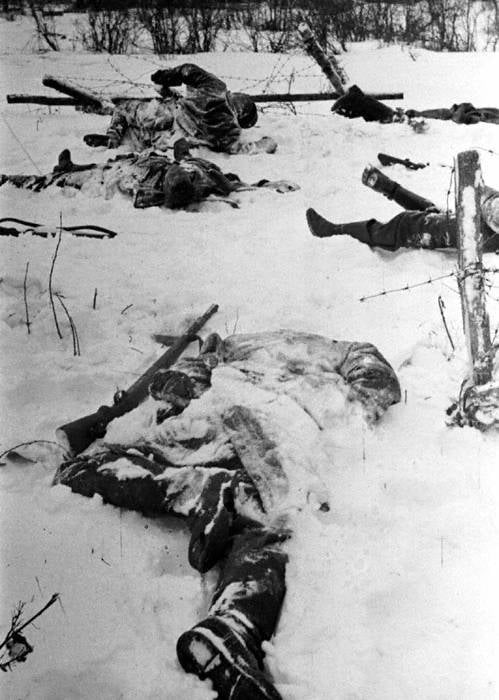
In the remaining nighttime, we were able to move east to 10-15 km and concentrated in the forest near the station and the village of Chaplyaevka, northeast of Kirov. After resting there and waiting for the darkness, we intended to move further east to join the units of the Red Army. A dirt road stretched along the edge of the forest in which we settled down. By evening, a column of armored personnel carriers, vehicles with infantry and a small group of light tanks appeared on it. When the head machine approached the edge of the forest, we were surprised to find a red flag on it. Then, after looking, they saw in the center of his circle with a swastika. The appearance of the enemy took us by surprise. The only shelter became the trunks of trees. There was no time to dig at least individual trenches. General Presnyakov gave the command: "Prepare for battle, but do not open fire without a command!"
When the enemy approached the forest, many fighters broke down and opened indiscriminate firing. The Germans stopped by surprise. In their column everything mixed up, individual vehicles with infantry jumped forward, but then, overcoming the confusion, the column turned around. Tanks and armored personnel carriers moved to the forest, firing as they went, including explosive bullets, which, flying over our heads, then burst even from light contact with the foliage of the trees. The impression of a complete environment. A panic arose that was hardly stopped. At the same time many fighters and especially commanders and political workers died. During this battle, we also lost remnants of artillery, all cars and horses.
Against the tanks, we only had grenades and bottles of flammable liquid. The knowledge that we are doomed, but by all means must hold out and not let the enemy into the depths of the forest, made us desperately resist. The Red Army soldier Mikhail Vilinov, a reconnaissance company fighter, a graduate of the Faculty of Geography of the Moscow State Pedagogical Institute, set fire to a tank with bottles of flammable liquid at close range, but he himself died. The group in which I was located was headed by a young lieutenant Nikolai Smirnov. We managed to cut off a group of infantrymen following him from the tank and destroy it, and then to fire two light tanks with grenades and incendiary bottles.
Not far from the place where I was, the onslaught of the Nazis was held back by a group of Red Army soldiers, among whom I recognized the postgraduate student of the Physics and Mathematics Faculty of the Moscow State Pedagogical Institute Levitan and the young PhD KV Vinogradov, my countryman from Donbass. Levitan threw a grenade under the tank, receiving a heavy wound. Other fighters also bombarded tanks and armored personnel carriers with grenades and bottles of combustible mixture. We managed to destroy most of the tanks, armored personnel carriers, enemy infantry, wedged into the forest, and captured a group of Germans. At nightfall, the Nazis stopped trying to crush our defenses. We persevered. Levitan and Vinogradov died in this battle.
It is difficult to determine our losses. They were huge. Of the approximately 2 thousand people able to move, no more than 300-350 remained. As it turned out after the war, General Presnyakov and Commissioner Antropov were seriously wounded and captured, where they behaved with dignity. There they died.
I had to decide what to do with the German prisoners. They were about 8-10 people. It was impossible to take them with you, but to let go was to put yourself under a death blow, all the more so as our tracks were clearly imprinted on the fresh snow. The desperate situation forced the Nazis to take us with them.
I remember how worried the fate of the seriously wounded caused us. We took all those who showed signs of life with us, carried them on self-made stretchers, and then left them in the care of local residents. There was no other way out. Many of the seriously injured survived. In the villages they were hidden and nursed. With horror I think about the fate of those who were seriously wounded or contused in that battle and were in deep shock. Then they all seemed dead to us. You can imagine what happened when the Nazis the next day took these places.
Most of the militia, once surrounded, tried, like our group, to break through to their own. Many of them died in clashes with the Nazis and local policemen. Separate "ringers", dressed in civilian clothes, remained in villages and villages. Such people were called priymaks. Some militiamen went to their relatives in their places of origin, if by that time they had not yet been captured by the Nazis.
After the battle, our group was headed by regimental commissar Klobukov. On deaf paths, most often at night we moved to the east. We had to focus on the advice of local residents about the most convenient and safe route to Moscow. After a few night crossings, we reached the Ugra River south of Yukhnov. There we are faced with a division of German soldiers. We were not able to fight, because we did not even have cartridges. The Nazis took us into the ring and drove along the Warsaw highway in Yukhnov. Thus, the remnants of the central group of parts of our 113 division ceased to exist as military units.
In Yukhnov, in a huge barnyard at a slaughterhouse surrounded by rows of barbed wire, we, the prisoners, turned out to be from 12 to 15 thousand people. After 24 hours, batches of 1,5-2 people, thousands of people, began to be built into columns to drive west along the Warsaw highway. When leaving the barn yard, a German soldier turned to me and shouted "Du Bist Yude?" (“Are you a Jew?” - him.) From surprise, I suddenly became numb, but the guys walking alongside, who I managed to make friends with, suddenly shouted: “The Caucasus!” No shots followed, and after a few minutes, our line of troops rushed through the gate.
Later, together with lieutenant N. D. Smirnov, I managed to escape. On one of the halts we dug into a huge haystack, lay there for several hours, and at dawn we continued our way to the east. December 16 we met part of the Red Army. Then the Specialists from the Smercha sent us, the 20-25 man of the "circlet", to check in Moscow, after which I returned to the front. But this is another storywhich goes beyond the real part of memories. As for Nikolai Smirnov, he, as I later learned, was sent for a more thorough inspection to the Mordovian camp, where he fell ill with transient tuberculosis and soon died. Such cases were not uncommon, especially in the first period of the war.
In conclusion, I would like to say that the Moscow militia contributed to the defense of the capital. His fighters showed high patriotism and resilience. Untrained, poorly armed militias were practically doomed to death, but they honestly fulfilled their duty to the Motherland. Let us bow our heads before the bright memory of the dead.
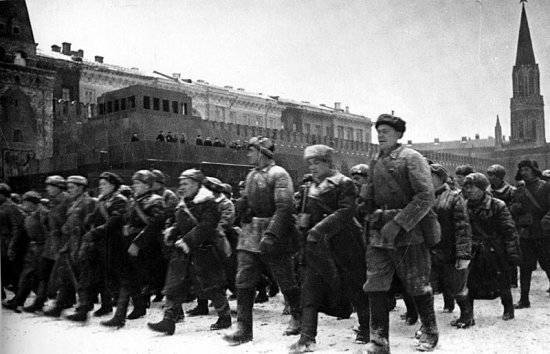
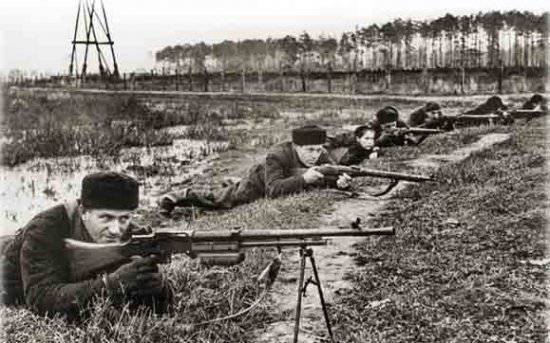
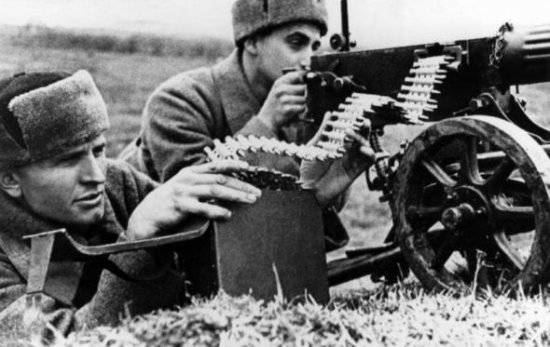
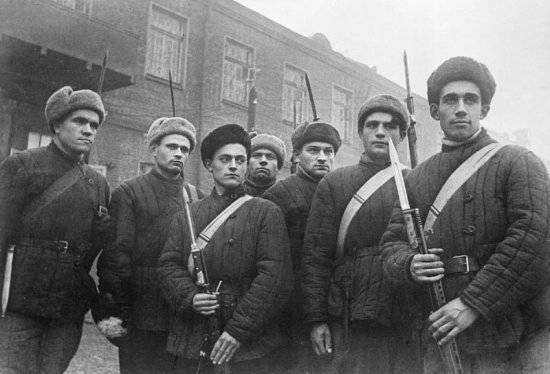

Information